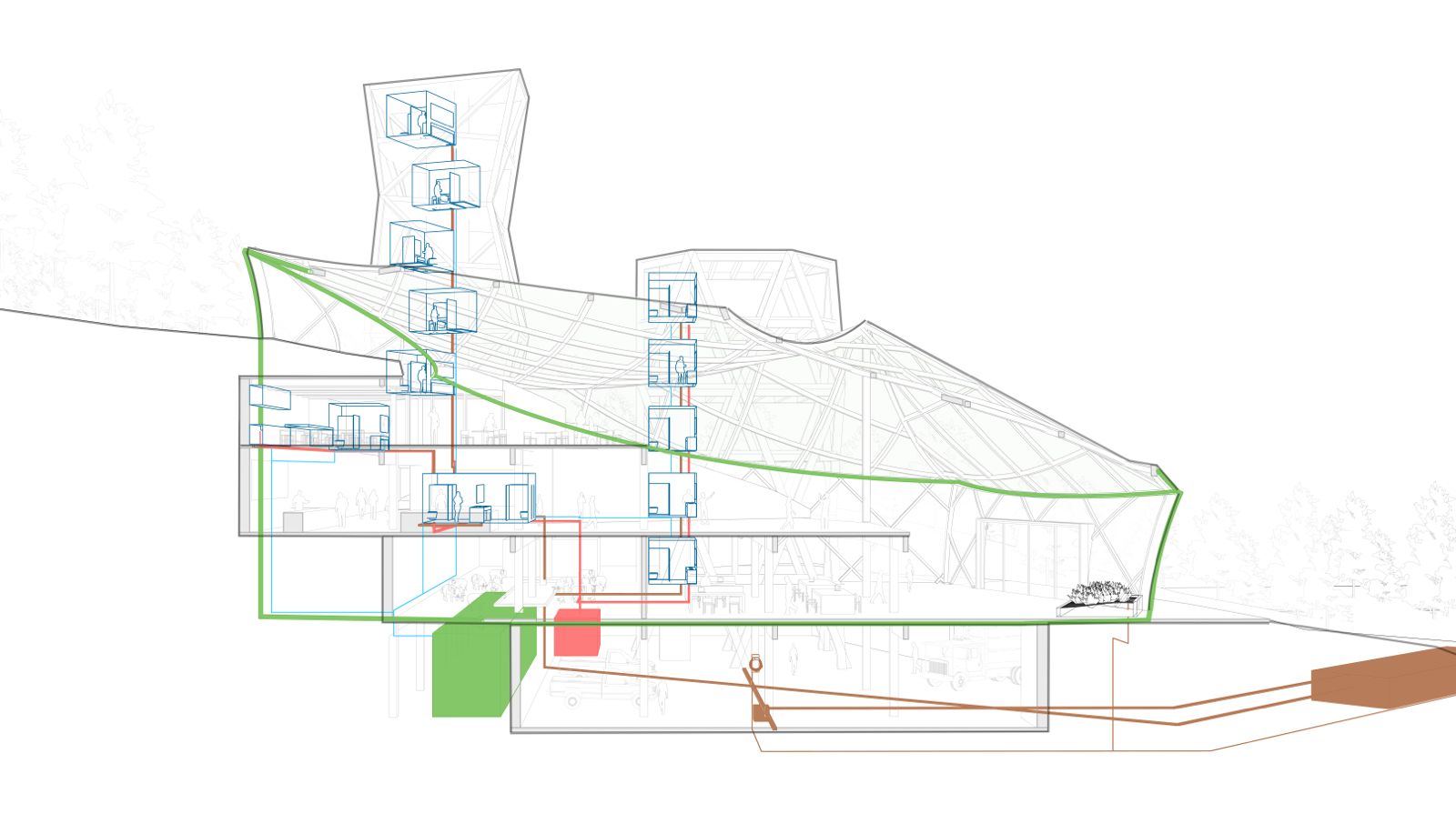BIOBASE(D) is a forest management and research center in the Pyrenees, dedicated to preventing forest fires through sustainable forestry and education. The building’s design responds to the local climate, highlights the potential of timber as a construction material, and offers visitors and staff a unique experience in this remarkable forest basecamp. Committed to sustainability and self-sufficiency, it integrates resource-efficient systems, including a carefully designed water management strategy.
GOAL
BIOBASE(D) is designed to be completely off-grid when it comes to water supply and discharge. To achieve this, we focus on three key strategies: reducing overall water consumption, harvesting and storing rainwater, and treating and reusing greywater. By implementing efficient fixtures, optimizing water use in daily operations, and closing the loop on wastewater, we minimize our impact on the environment while ensuring a resilient and self-sufficient water system.

SYSTEM OVERVIEW
The diagram below provides an overview of the building’s water management system. Rainwater from the dome and towers is collected and filtered. Thanks to the building’s rural, high-altitude location with clean air and the smooth surface of the dome—ideal for rainwater harvesting—the filtered water will be safe for drinking. This water supplies all functions in the residential area, offices, and visitor center.
Blackwater from toilets and sheep waste is directed to the composting system, while greywater from other functions flows to the wetlands for natural treatment. Once purified, this water is used in the industrial areas of the building, with any excess directed toward irrigating plants in and around the site. After being used in industry, the water passes through a hydrocarbon separator before returning to the wetlands for further treatment, ensuring a continuous cycle of reuse for industry and irrigation.
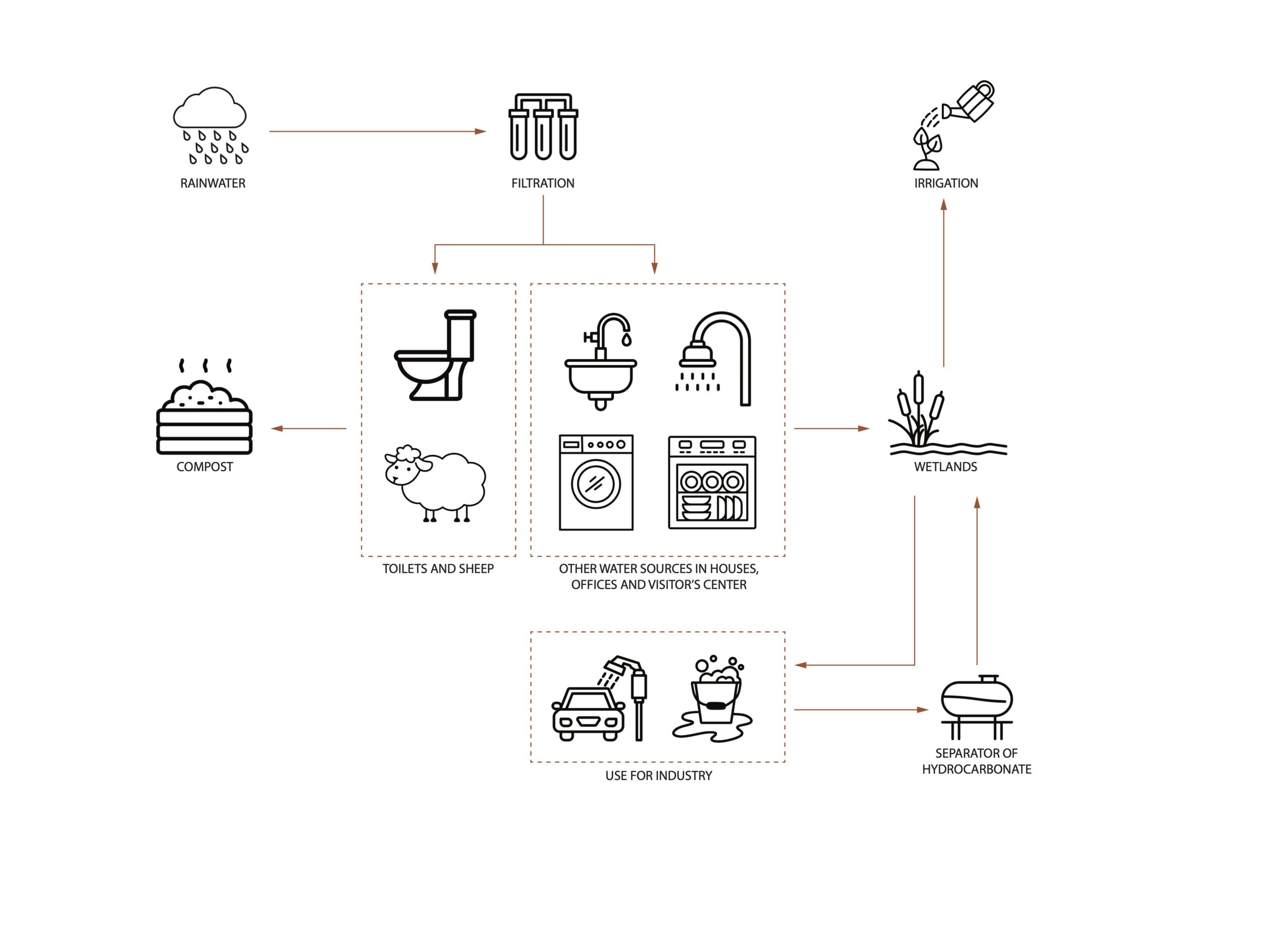
REDUCTION STRATEGIES
To reduce the building’s overall water consumption, we will implement several key strategies: foam-flushing compost toilets to minimize water use while recycling waste, water-saving tap nozzles to optimize flow without compromising functionality, and efficient showerheads that reduce consumption while maintaining comfort.
Unlike traditional compost toilets, which must be positioned directly above the composting chamber, the Clivus Multrum foam-flush system allows for flexible placement, making it suitable for multi-story buildings. By using a small amount of biodegradable soap, air, and water to create a foam barrier, it efficiently transports waste to a remote composting unit while reducing odors and water consumption. With a flush volume of just 0.18 liters—compared to 10 liters for a conventional toilet—it provides a sustainable sanitation solution.
The image on the right illustrates the toilets across different parts of the building and their connection to the compost container on the lowest floor. In addition to human waste, the compost system also processes sheep manure and food waste from residents and employees. This integrated approach reduces waste, minimizes water consumption, and contributes to a circular nutrient cycle within the building.
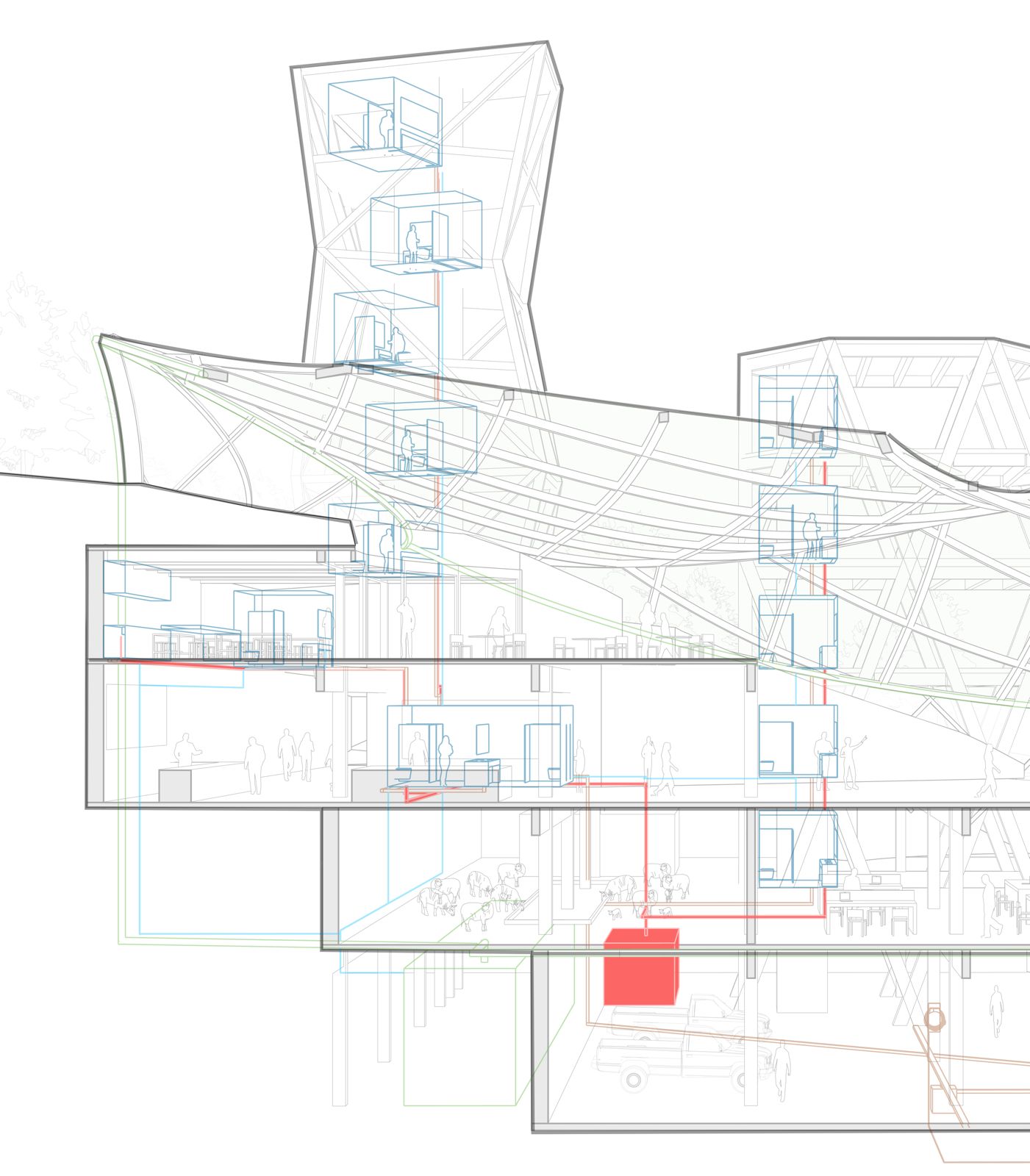
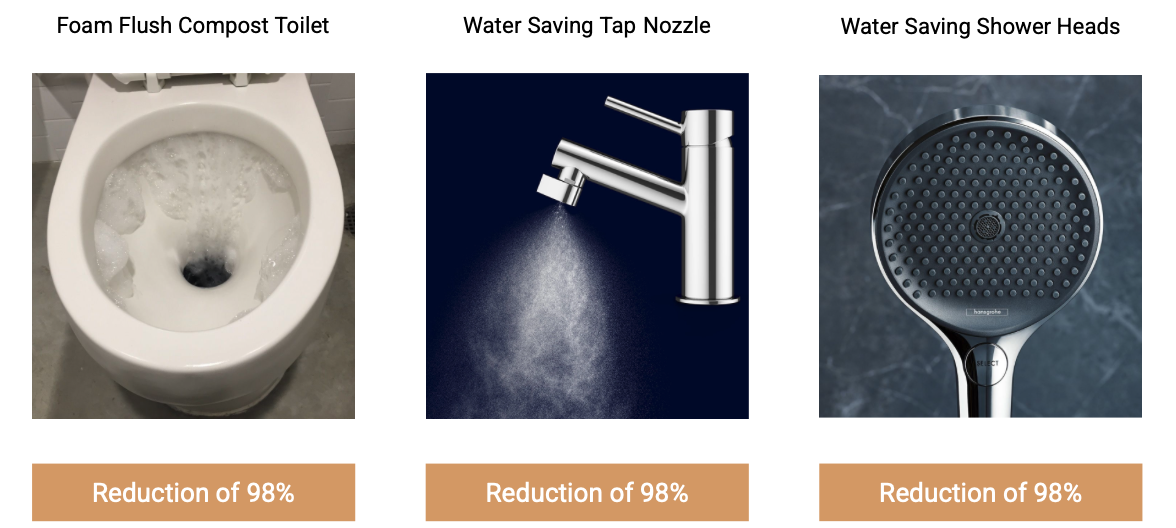
The tables below present a breakdown of water consumption in the residential units before and after implementing reduction measures, including foam-flush compost toilets, water-saving tap nozzles, and efficient showerheads. These strategies result in a significant overall reduction of 64%, lowering daily water use from 4,530 liters to just 1,635.6 liters.
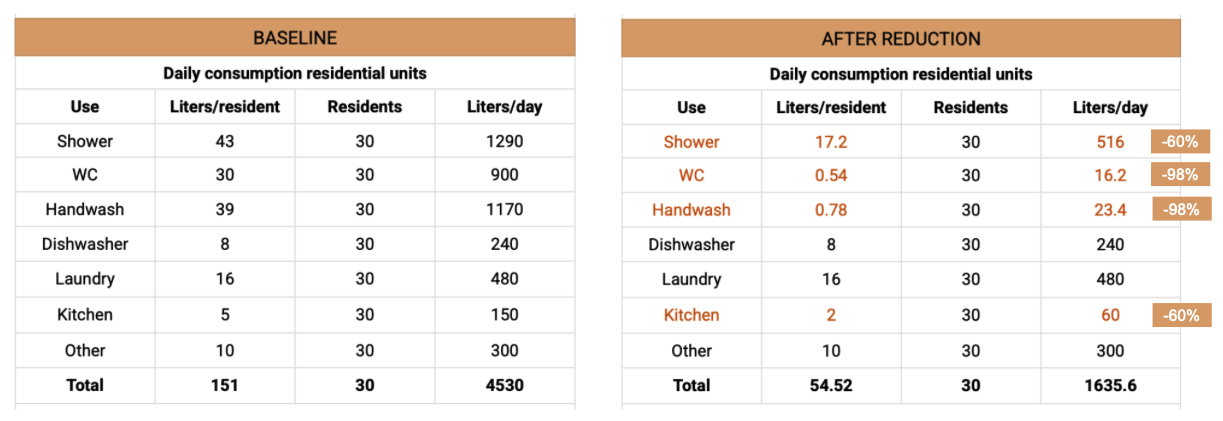
We have applied these water reduction strategies across all functions of the building. The graph below illustrates the yearly water consumption of each part of the building before and after implementation. Significant reductions can be seen in the residential units, offices, visitor center, and industrial areas. However, water use for the sheep and irrigation remains unchanged, as these are based on the essential needs of living organisms. Overall, the building’s total water consumption has been reduced by 51%, from 5,347,615 liters per year to 2,672,165 liters.
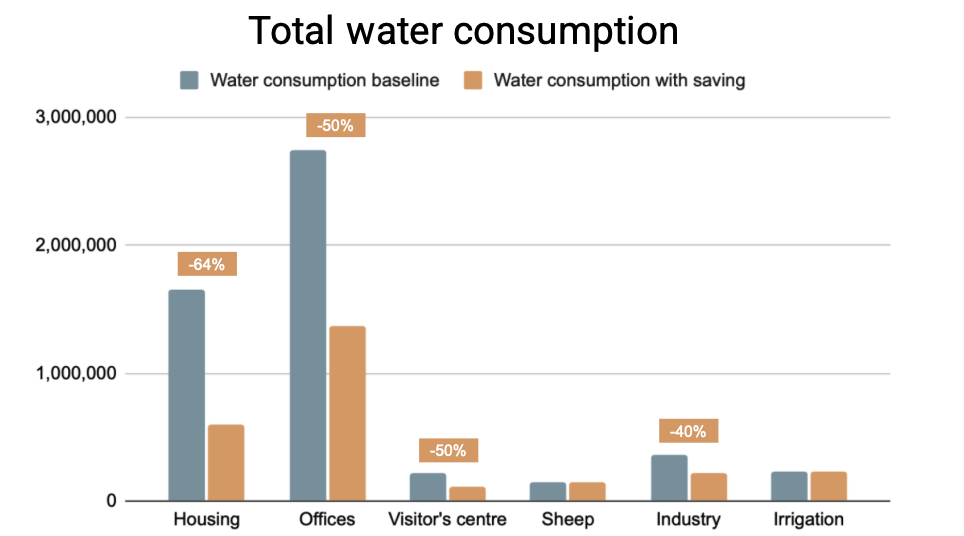
As shown in the system overview diagram, the water supply for the residential units, offices, visitor center, and sheep comes from collected and filtered rainwater. Meanwhile, the industry and irrigation systems rely on treated greywater from the other functions.
RAIN WATER HARVESTING
Rainwater is harvested from the ETFE roof of the dome and the roofs of the towers, taking advantage of their large surface areas and smooth materials for efficient collection. The captured rainwater is then directed to a storage tank located beneath the building, where it is filtered and distributed for use in the residential units, offices, visitor center, and sheep facilities. This system ensures a reliable and sustainable water supply, reducing dependence on external sources.
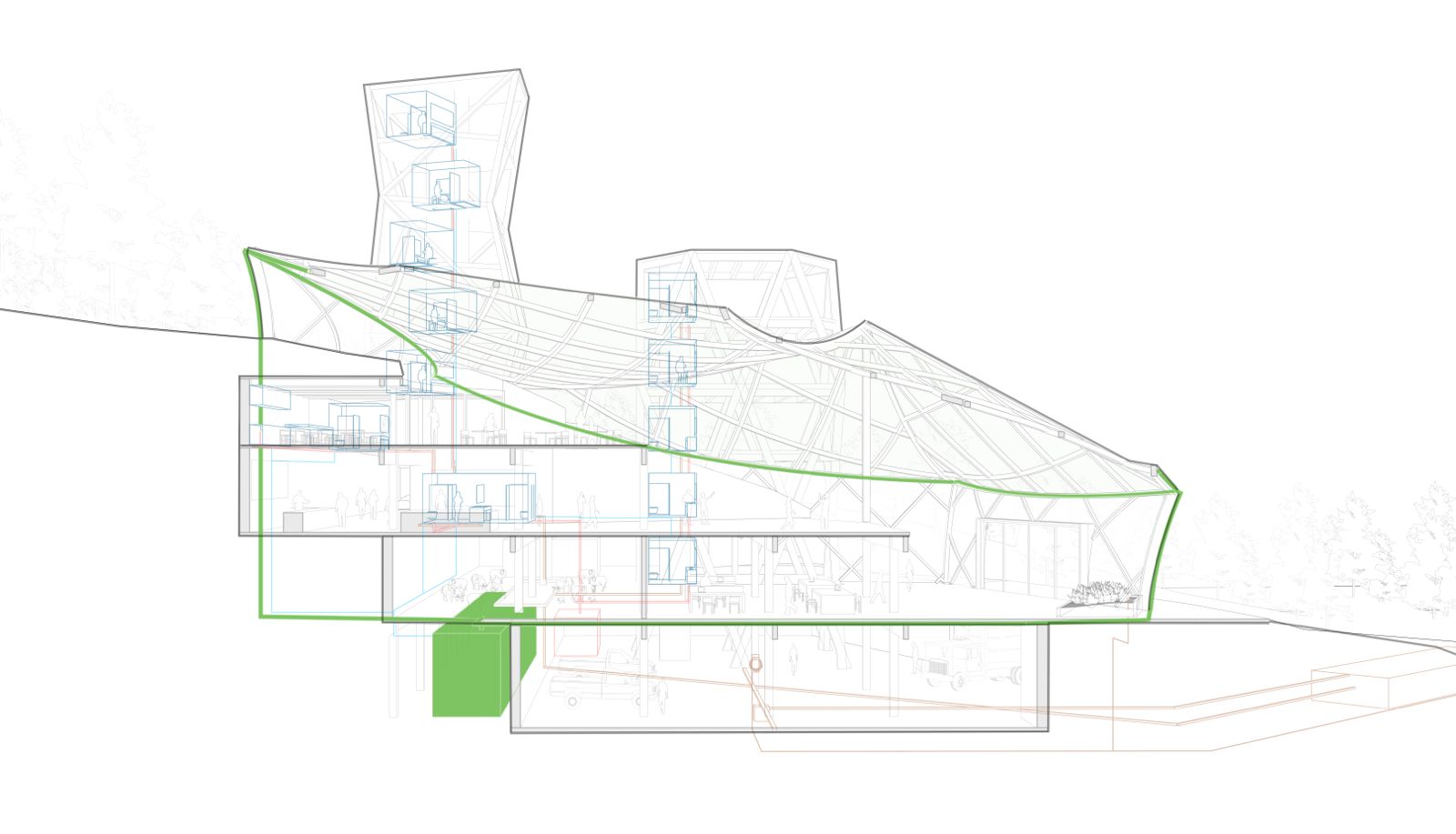
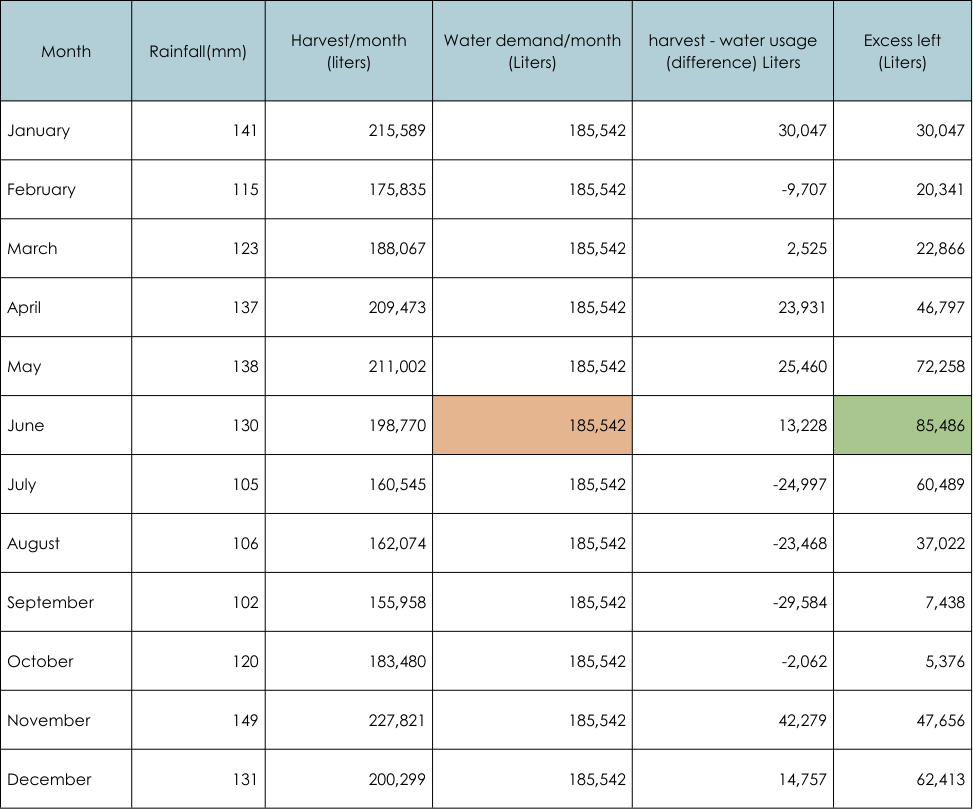
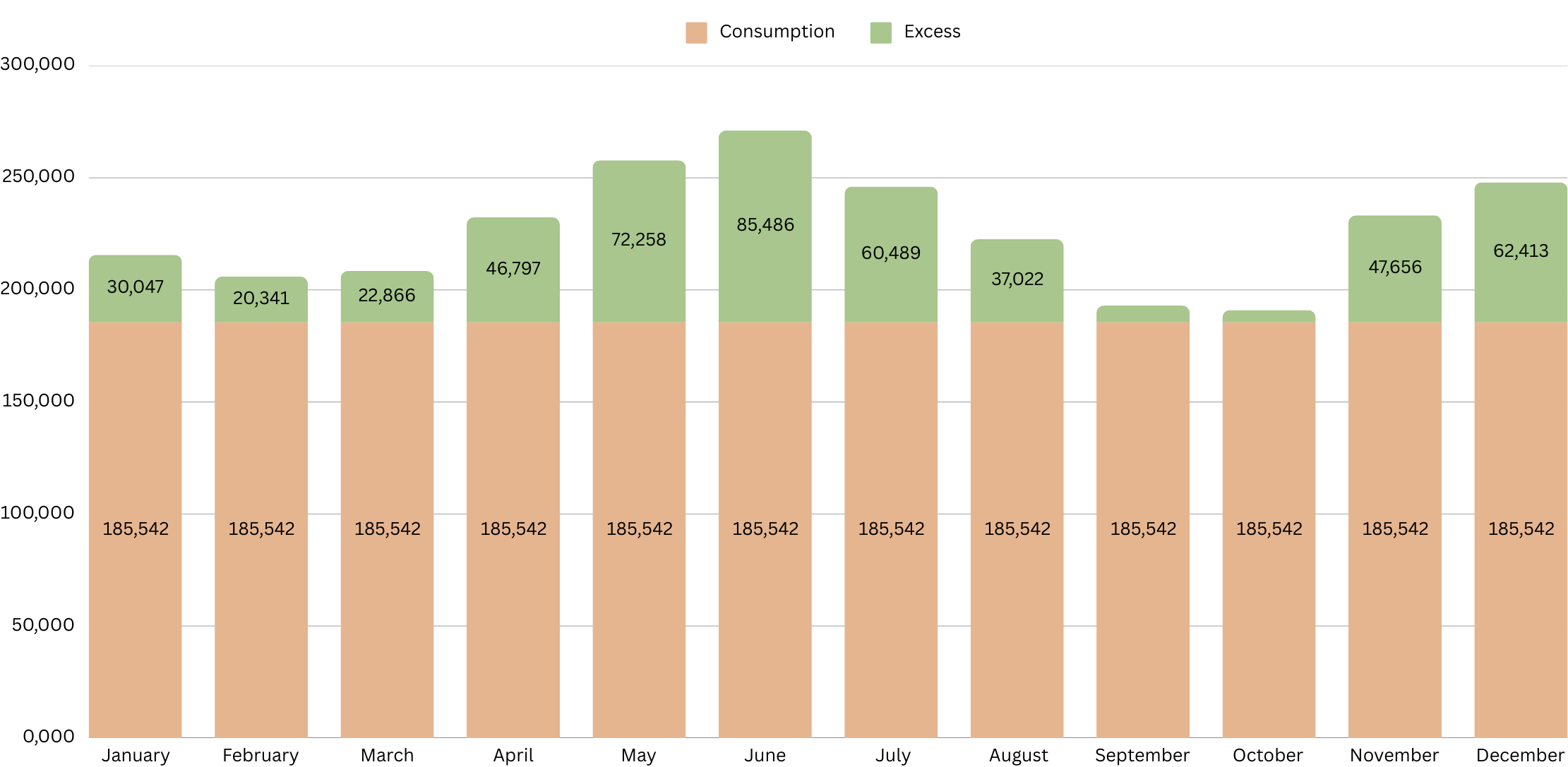
Rainwater harvest per year = 2,288,913 L Water consumption per year = 2,226,500 L
Tank Capacity needed : 271,028 L ( 185,542 L + 85,486 L) Tank volume = 271 cubic meters Tank size needed = 7 m x 6.5 m x 3 m (l x b x h) – (2. no.s )
Through rainwater harvest, 100% water consumption can be achieved without any external sources.
GREYWATER REUSE
Greywater from the residential units, offices, visitor center, and sheep facilities is collected and treated through a constructed wetland system. This natural filtration process purifies the water, making it suitable for reuse in the building’s industrial functions and for irrigating plants in and around the site. By closing the water cycle, this system minimizes waste and maximizes resource efficiency.
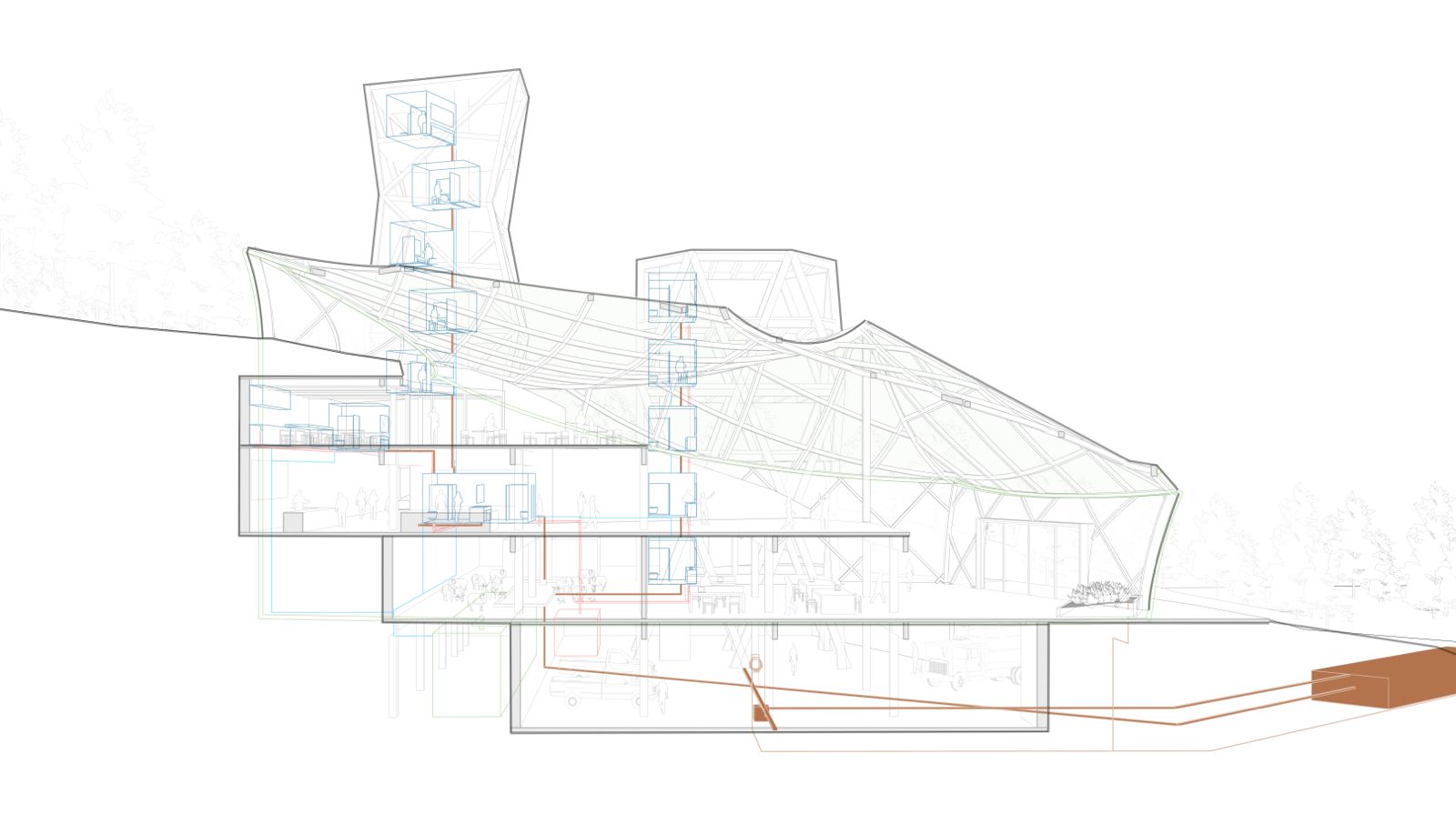
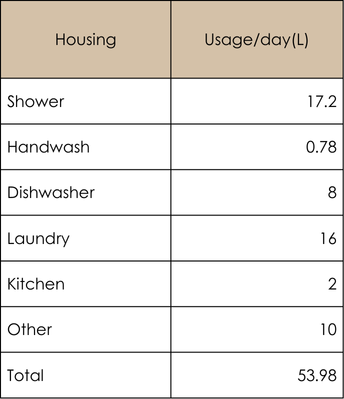
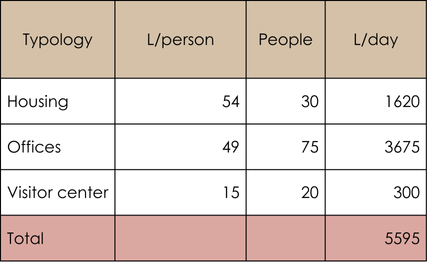
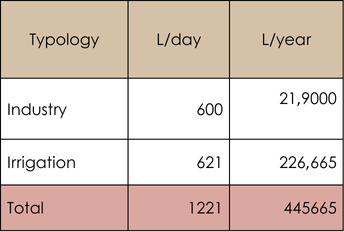
- Monthly greywater generated = 170,180 L
- After Filtration process(10% loss)= 153,162 L
- Monthly Greywater needed = 37,139 L
- Excess greywater = 116,023 L
Tank capacity needed = 153,162 L Tank volume = 154 cubic meters Tank dimensions= 6m x 5m x 3m (l xb x h)- 2 no.s
The excess water generated is supplied to the irrigation around the building , which also helps as a firefighting agent in case of forest fires.
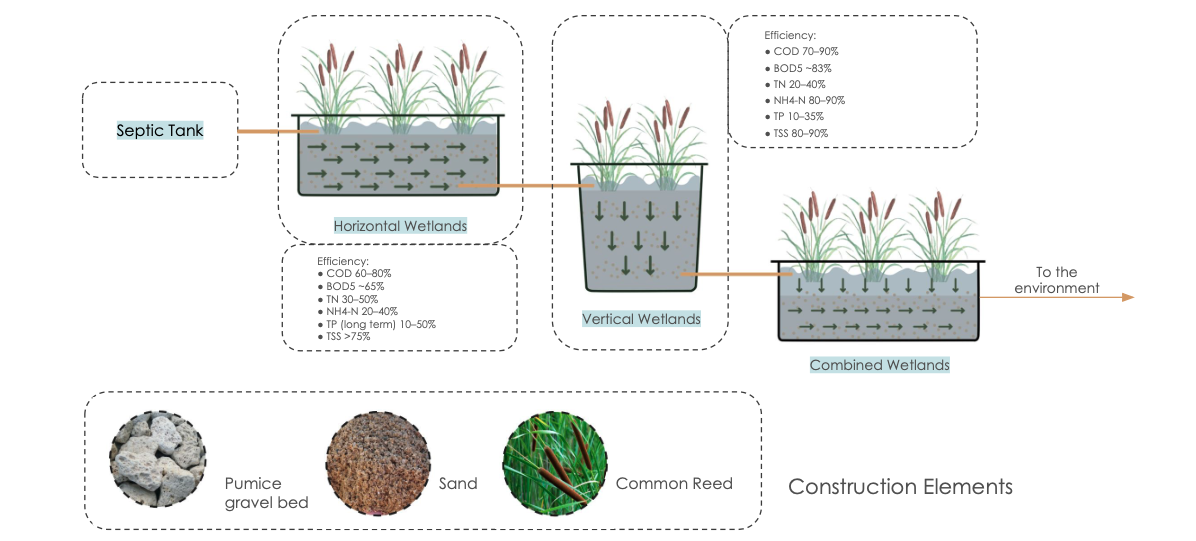
To effectively treat greywater, we calculate the required wetland area based on a standard of 20 m² per person, assuming an average daily water use of 130 liters. This means each liter of greywater requires approximately 0.15 m² of wetland for treatment.
With a total greywater output of 5,595 liters per day, the necessary wetland area for BIOBASE(D) is:
5,595 L/day × 0.15 m²/L = 840 m² of wetlands.
OVERVIEW
